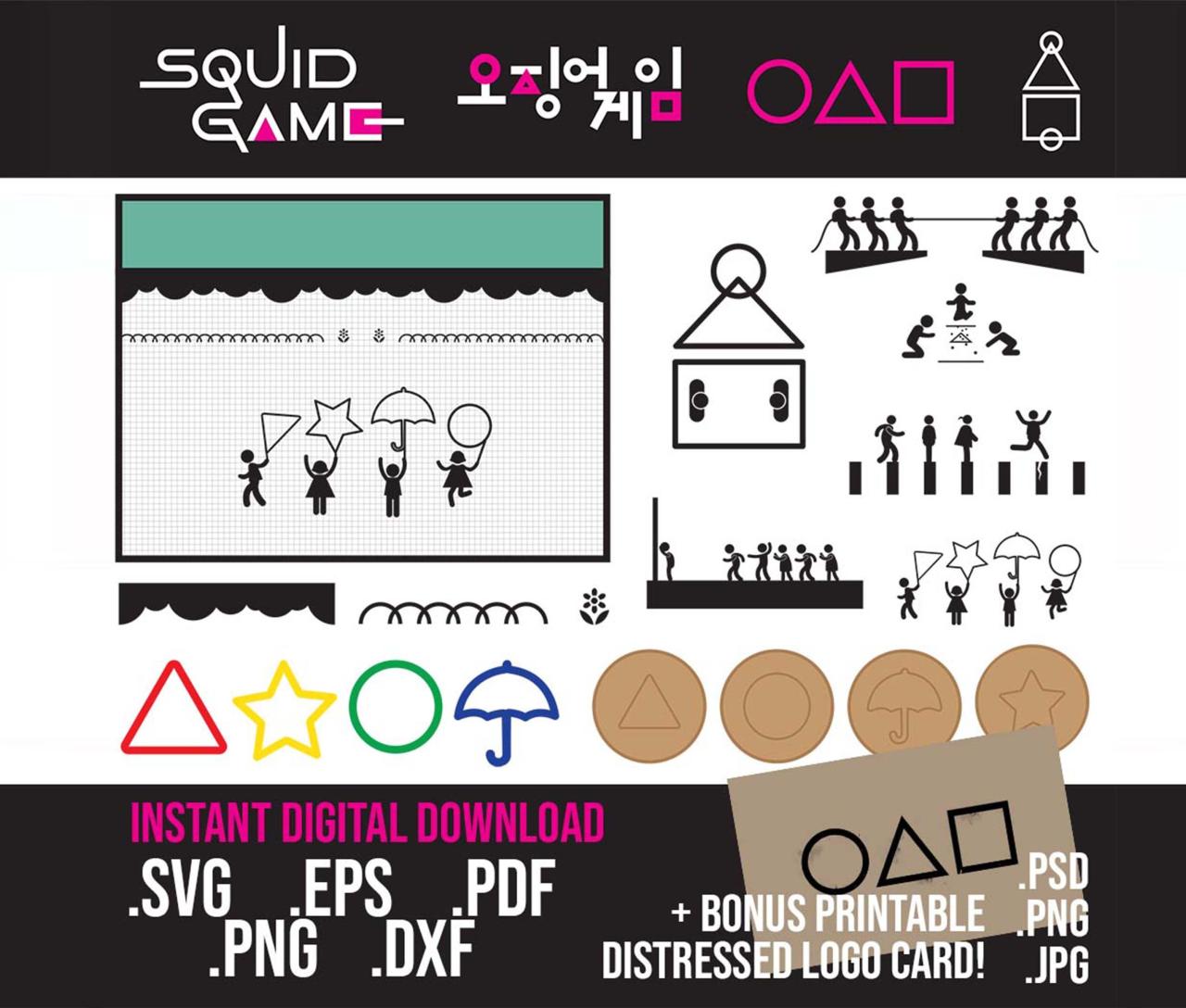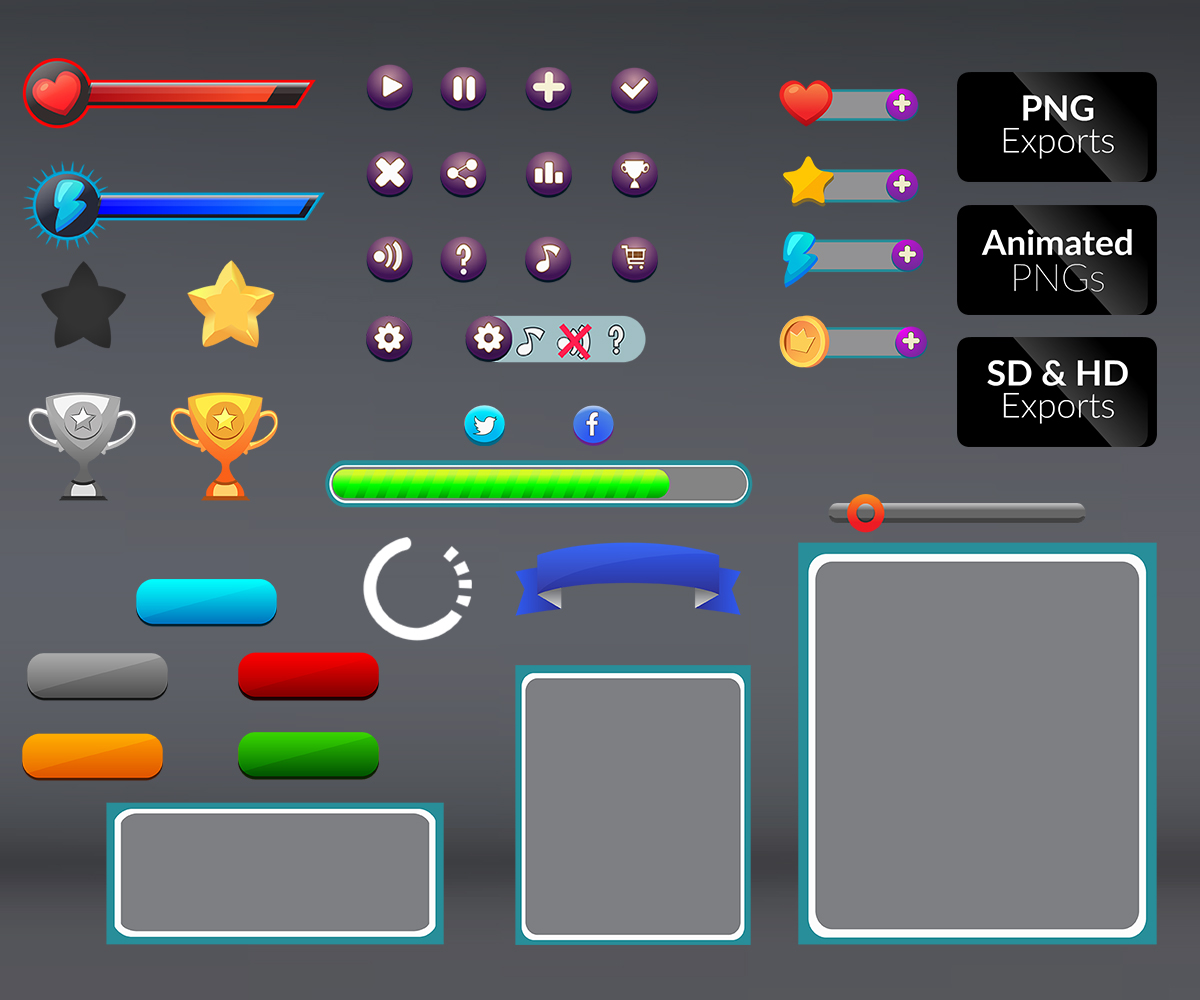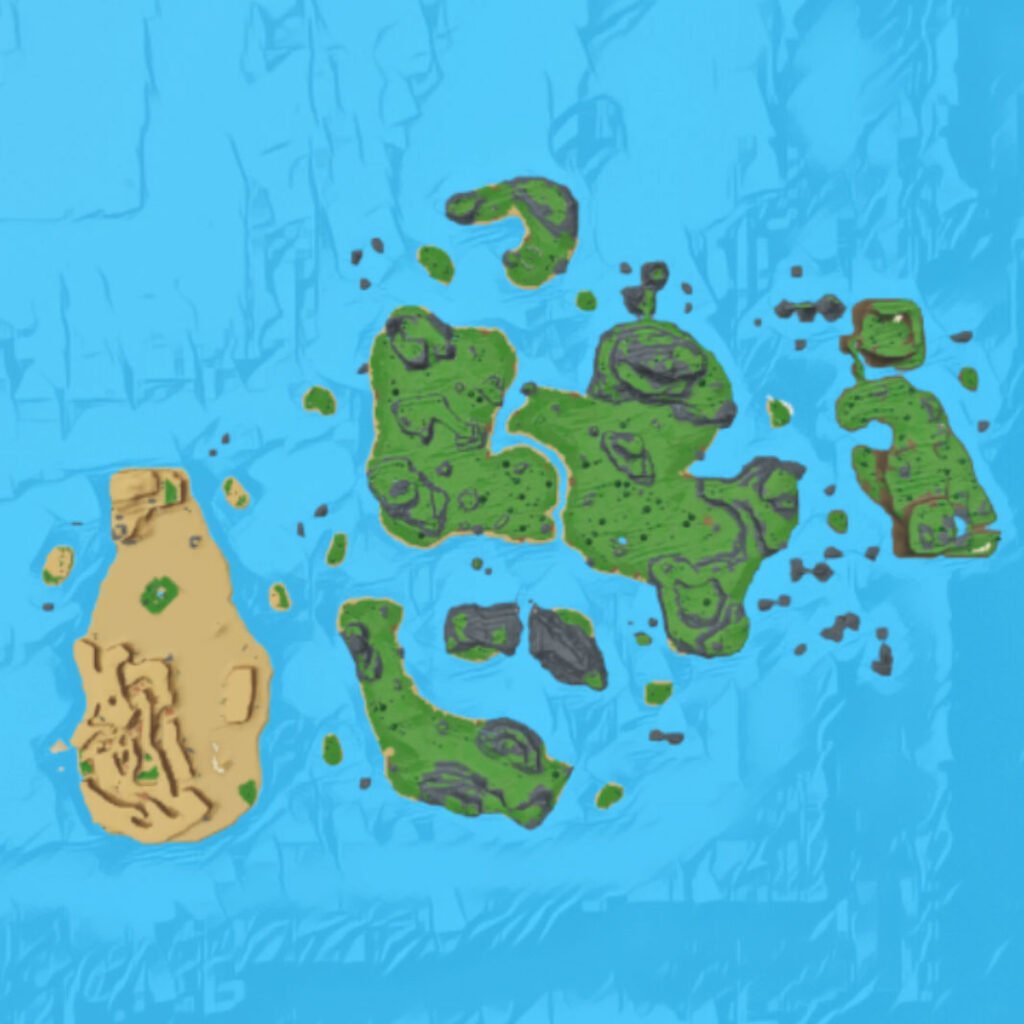Game online web is at the forefront of a rapidly evolving industry, where innovation meets entertainment. As gaming technology advances, players are witnessing a remarkable shift, especially with the rise of mobile gaming that has transformed the landscape, captivating audiences far beyond traditional consoles. Moreover, the integration of virtual reality (VR) and augmented reality (AR) is revolutionizing the way we experience online games, providing immersive adventures that were once only a fantasy.
Understanding the game development process is crucial for aspiring developers. From initial concepts to the final launch, numerous stages are involved, each requiring specific tools and technologies. Best practices for optimizing game performance on web platforms ensure a smooth user experience, which is essential in retaining players in a competitive market.
Online Gaming Trends

The online gaming landscape is constantly evolving, with new trends reshaping how players engage with their favorite games. These trends often reflect technological advancements, user preferences, and shifts in the entertainment industry. Staying updated on these changes is crucial for both gamers and developers alike, as they can significantly impact market dynamics and user experiences.
The rise of online gaming has coincided with rapid advancements in technology. The increasing accessibility of high-speed internet has allowed for more immersive experiences, showcasing real-time interactions and graphics that were once unimaginable. This evolution has also led to a marked increase in mobile gaming, which is now a dominant force in the gaming world, reshaping traditional gaming platforms.
Rise of Mobile Gaming
Mobile gaming has surged in popularity, with millions of players worldwide opting for games that can be played on smartphones and tablets. This trend has major implications for the gaming industry, changing how developers approach game design and marketing.
The importance of mobile gaming can be highlighted through several key points:
- The convenience of playing anywhere and anytime has made mobile games immensely popular, appealing to a broader audience beyond traditional gamers.
- Mobile games often employ free-to-play models with microtransactions, which have successfully monetized a large user base while keeping entry barriers low.
- Titles like “PUBG Mobile” and “Fortnite” have proven that mobile versions can compete with their console and PC counterparts in terms of gameplay quality and player engagement.
Emergence of Virtual Reality (VR) and Augmented Reality (AR)
Virtual Reality (VR) and Augmented Reality (AR) technologies are redefining how players experience games, adding a new dimension to gameplay that was previously unattainable. These technologies create immersive environments that enhance user engagement, allowing players to interact with their game worlds in unprecedented ways.
The impact of VR and AR on online gaming can be understood through the following aspects:
- VR provides a fully immersive experience, allowing players to feel as though they are truly part of the game world. Titles like “Beat Saber” and “Half-Life: Alyx” showcase the potential of VR to deliver unique gaming experiences.
- AR games, such as “Pokémon GO,” have successfully blended the physical and digital worlds, encouraging social interactions and outdoor activities while playing.
- The ongoing development of hardware, such as the Oculus Quest and PlayStation VR, is making VR gaming more accessible and affordable, driving further adoption.
“The convergence of technology and gaming has transformed the entertainment landscape, making gaming more inclusive and immersive than ever before.”
Game Development Process: Game Online Web

Developing a web-based game is an intricate journey that combines creative storytelling, artistic design, and technical prowess. From the initial concept to the final launch, each stage of the game development process plays a critical role in shaping the player’s experience. Understanding this process helps developers streamline their efforts and create engaging, high-performing games that captivate audiences.
The game development process typically involves several key stages, each requiring a unique set of skills, tools, and technologies. These stages include concept development, pre-production, production, testing, and launch. Each phase builds upon the previous one to ensure a cohesive and enjoyable gaming experience. Below is a detailed overview of these stages.
Stages of Game Development, Game online web
The stages of developing a web-based game follow a structured approach:
- Concept Development: This initial phase is where ideas are generated. Developers brainstorm game mechanics, storylines, and character designs. It’s crucial to create a game design document (GDD) that Artikels the vision and elements of the game.
- Pre-Production: In this phase, the team prepares for development by establishing the technical requirements and creating prototypes. This includes choosing a game engine, defining art styles, and planning the project timeline.
- Production: The core development phase involves coding, art creation, sound design, and integrating all components. Developers build game levels, characters, and systems while continuously testing features for functionality and quality.
- Testing: Quality assurance (QA) involves rigorous testing to identify and fix bugs. Playtesting with real users provides feedback on gameplay mechanics and overall enjoyment, ensuring the game meets player expectations.
- Launch: This final stage involves deploying the game on various platforms. Marketing efforts begin to attract players, and developers prepare for post-launch support and updates based on player feedback.
Essential Tools and Technologies
A variety of tools and technologies are essential in the game development process, aiding developers in creating engaging and performant web-based games. Understanding these can significantly enhance the efficiency and quality of the game.
Popular game development engines include Unity, Unreal Engine, and Godot, which provide the framework for building interactive experiences.
The following tools are commonly utilized in game development:
- Game Engines: Unity and Unreal Engine are leading choices for 3D games, while frameworks like Phaser and Construct are popular for 2D games.
- Programming Languages: JavaScript is essential for web-based games, often combined with HTML5 and CSS for rendering. Other languages like C# (for Unity) or C++ (for Unreal) are also widely used.
- Graphics and Design Tools: Software such as Blender, Adobe Photoshop, and GIMP are vital for creating game art, animations, and user interface design.
- Version Control Systems: Tools like Git help manage code changes and collaboration among team members effectively.
- Audio Tools: Programs like Audacity and Ableton Live assist in sound design and music composition to create immersive audio experiences.
Best Practices for Optimizing Game Performance
Optimizing game performance for web platforms is crucial, as it directly influences player retention and satisfaction. By following best practices, developers can enhance the user experience and ensure smooth gameplay.
Before diving into optimization techniques, it’s essential to understand that performance issues can arise from graphics, server response times, and gameplay mechanics. Here are some best practices to consider:
- Minimize Asset Sizes: Reduce the file sizes of textures, audio, and models to decrease load times and improve performance. Techniques such as compression and efficient asset management play a key role.
- Optimize Code: Regularly review and refactor code to remove inefficiencies. Using efficient algorithms and minimizing memory usage can significantly enhance performance.
- Reduce Draw Calls: Combine multiple objects into a single mesh or use sprite sheets to minimize the number of draw calls made to the GPU.
- Implement Lazy Loading: Load assets only when they are needed to prevent overwhelming the browser and improve initial load times.
- Test on Multiple Devices: Ensure the game runs smoothly across various devices and browsers by conducting extensive testing and making necessary adjustments based on device capabilities.
Community and Social Interaction

The online gaming landscape has transformed significantly over the years, with community and social interaction playing pivotal roles in enhancing player experiences. Gamers today don’t just play to win; they seek companionship, camaraderie, and a sense of belonging. The emergence of robust online communities has made it easier than ever for players to connect, share experiences, and collaborate, creating a more immersive and enjoyable gaming environment.
Social features like chat systems and multiplayer modes are integral to player engagement. They provide platforms for communication, allowing players to strategize in real time, share tips, or simply enjoy casual banter. This socialization not only fosters friendships but also helps to create a vibrant community where players can support each other and share their gaming journeys. Moreover, these interactions can lead to increased loyalty to games and platforms, as players are more likely to return to environments where they feel connected and valued.
Impact of Online Communities on Gaming
Online communities serve as the backbone of multiplayer gaming, enabling players to engage deeply with their favorite titles. These communities often manifest in various forms, including forums, social media groups, and in-game guilds or clans. Their influence on the gaming experience can be categorized into several key areas:
- Shared Knowledge and Resources: Community members often share strategies, game updates, and tutorials. This collaborative spirit enhances individual gameplay and brings newcomers up to speed quickly.
- Emotional Support: Players often face challenges in games that can be frustrating. Online communities provide a support network where players can vent frustrations, celebrate victories, and share emotional support, fostering a sense of empathy.
- Involvement in Game Development: Many developers now engage their communities in the game development process. Feedback from players can lead to significant game improvements, creating a sense of ownership and investment.
- Enhancing Longevity: Games that nurture active communities often see increased longevity. Players are more likely to stick around when they have friends and allies engaging with them regularly.
Influence of Social Features on Player Engagement
Social features are designed to enhance interactions, making gaming a more communal experience. The presence of chat functions, cooperative missions, and online tournaments can significantly affect how players interact with the game and each other.
- Real-Time Communication: Instant messaging and voice chat enable players to communicate strategies during intense gameplay moments, creating a more dynamic and engaging experience.
- Multiplayer Modes: Cooperative and competitive multiplayer modes encourage teamwork and rivalry, which can lead to stronger player bonds and an increased desire to improve skills.
- Events and Tournaments: Many online platforms host special events and tournaments that encourage community participation. These events not only enhance engagement but also contribute to a more vibrant gaming culture.
Comparison of Platforms Facilitating Social Interactions
Different online platforms offer unique tools and features that promote social interactions among players. Understanding how these platforms compare can help players choose the best community for their gaming preferences.
- Discord: A communication platform that has become essential for gamers. It supports voice, video, and text chat, and allows for the creation of community servers focused on specific games or genres.
- Steam: Known for its extensive library of games, Steam also offers features such as friends lists, chat options, and community hubs where players can discuss games, share content, and organize events.
- Xbox Live: This platform provides robust social features, including party chat, multiplayer matchmaking, and a built-in social network that connects players across various games.
- PlayStation Network: Offers similar features to Xbox Live, promoting player interaction through messaging, game invites, and shared trophies, enhancing the collaborative gaming experience.
If you’re a gaming enthusiast on PC, diving into the world of xbox game pass pc opens up a treasure trove of titles to explore. This subscription service not only offers a vast library of games but also provides the flexibility to play new releases on day one. Whether you’re into indie gems or blockbuster hits, Game Pass has something for everyone, making it a must-try for any serious gamer.
If you’re a PC gamer, you should definitely check out the xbox game pass pc. It offers a vast library of games that you can access for a monthly fee, making it super convenient for those who love to try new titles without breaking the bank. Plus, the service is constantly updated, so there’s always something fresh to play.

